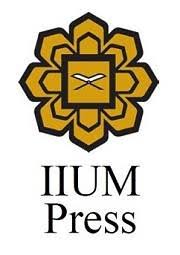SA‘AD IBN MU‘ĀDH’S JUDGMENT ON BANŪ QURAYẒAH: ANALYZING CLAIMS OF ITS JEWISH LAW ORIGINS
DOI:
https://doi.org/10.31436/alburhn.v9i1.362Keywords:
Jewish Law, Banu Qurayzah, Islamic LawAbstract
The Battle of the Trench (626–627 A.D.) marked a pivotal moment in early Islamic history, during which the Banū Qurayẓah tribe was accused of treason. Following their alleged betrayal, Sa‘ad ibn Mu‘ādh, a key companion of the Prophet Muhammad and leader of the Aws tribe, issued a decisive verdict: all adult male members of the Banū Qurayẓah were to be executed, while the remaining members—women and children—were to be enslaved. Some contemporary scholars argue that this judgment was rooted in Jewish legal principles, suggesting that Sa‘ad ibn Mu‘ādh’s ruling mirrored legal prescriptions found in Jewish law.
This study thoroughly examines this claim by analyzing primary sources from Jewish and Islamic legal traditions, alongside historical accounts. Through meticulous library-based research, we critically evaluate whether Jewish law played a role in shaping Sa‘ad ibn Mu‘ādh’s decision. Our findings indicate that there is scant evidence to support the assertion that his judgment was influenced by Jewish legal doctrine. Instead, a thorough analysis of historical and legal sources strongly suggests that Sa‘d’s ruling was grounded in the prevailing customs of Arabian tribal warfare, which were subsequently legitimized by Islamic law. This research thus challenges the notion of Jewish legal influence and highlights the broader socio-political and legal context within which Sa‘ad ibn Mu‘ādh’s verdict was rendered.
Downloads
References
Ahmad, B. (1979). Muhammad and the Jews: A Re-Examination. Vikas Publishing House.
Ahmadvand, F., & Tafreshi, A. (2011). Daily Life, Districts and Strongholds of the Jews in the Hijaz at the Advent of Islam. In J. Che & N. Pappas (Eds.), The Traditional Mediterranean: Essays from the Ancient to the Early Modern Era. Athens Institute for Education and Research.
Al-‘Alī, I. (1990). Ṣaḥīḥ Al-Sīrah Nabawiyyah. Dar al-Nafā’is.
Al-‘Uthaymīn, M. ibn Ṣāliḥ. (2008). The Fundamentals of Tafseer. Tarbiyyah Bookstore Publishing.
Al-Asqalani, I. H. (2002). Fathul Baari (Vol. 2). Pustaka Azzam.
Al-Baghdādī, ‘Alī ibn Thābit al-Khaṭīb. (2001). Tārīkh Madīnah (Vol. 2). Dar al-Gharb al-Islami.
Al-Balādhurī, A. ibn Y. ibn J. (1996). Ansāb al-Ashrāf (Vol. 12). Dār al-Fikr.
Al-Bukhārī, M. ibn I. (1997a). Sahih Al-Bukhari (Vol. 8). Darussalam.
Al-Bukhārī, M. ibn I. (1997b). Sahih Al-Bukhari (Vol. 4). Darussalam.
Al-Bukhārī, M. ibn I. (1997c). Sahih Al-Bukhari (Vol. 1). Darussalam.
Al-Dawoody, A. (2011). The Islamic Law of War: Justifications and Regulations. Palgrave Macmillan. DOI: https://doi.org/10.1057/9780230118089
Al-Dhahabī, M. ibn A. ibn ʿUthmān I. (1382). Mīzān al-I’tidāl (Vol. 3). Dār al-Ma’rifah li al-Thibā’ah wa al-Nashr.
Al-Ḥanbalī, I. R. (n.d.). Fatḥ al-Bārī (Vol. 2). Maktabah Al-Ghuraba fi Shamilah.
Al-Iṣfahānī, ʿAlī ibn al-Ḥusayn. (2008). Kitāb al-Aghānī (Vol. 9). Dar al-Kutub al-’Ilmiyyah.
Al-Kalbī, H. ibn M. (2000). Kitab Al-Aṣnām. Dar al-Kutub Al-Misriyyah.
Al-Nuwayrī, S. al-D. A. (2004). Nihāyat al-’Arab fī Funūn al-adab (Vol. 15). Dar al-Kutub al-’Ilmiyyah.
Al-Ṭabari, M. ibn J. (1993a). The History of Al-Tabari (Vol. 8). State University of New York Press.
Al-Ṭabari, M. ibn J. (1993b). The History of Al-Tabari (Vol. 6). State University of New York Press.
Al-Zarkalī, K. al-D. (2002). Kitab Al-A‘lām (Vol. 2). Dar al-’Ilm Lil Malayyin.
Al-Zayd, Z. bin ‘Abd al-K. (2004). Muqaddimah fī al-Qānūn al-Duwalī al-Insānī fī al-Islām. The International Committee of the Red Cross, Kuwait Delegation.
Al-Zuḥaylī, W. (2011). Fiqih Islam Wa al-Adillatuhu (Vol. 8). Gema Insani Press.
Alster, B. (2014). R. Moshe Feinstein on Milhemet Mitzvah. In K. Berthelot, J. E. David, & M. G. Hirshman (Eds.), The Gift of the Land and the Fate of the Canaanites in Jewish Thought. Oxford University Press. DOI: https://doi.org/10.1093/acprof:oso/9780199959808.003.0019
Ath-Thabari, M. bin J. (2007). Tafsir Ath-Thabari (Vol. 5). Pustaka Azzam.
Badawi, N. (2016). Regulation of armed conflict: critical comparativism. Third World Quarterly, 37(11), 1990–2009. DOI: https://doi.org/10.1080/01436597.2016.1186491
Baron, S. W. (1957). A Social and Religious History of the Jews (Vol. 3). Columbia University Press.
Birū, T. (2001). Tārīkh al-’Arab Al-Qadīm. Dar al-Fikr.
Bleich, D. (1983). Preemptive War in Jewish Law. Tradition: A Journal of Orthodox Jewish Thought, 21(1).
Driver, S. (1896). A Critical and Exegetical Commentary on Deuteronomy. T. & T. Clark.
Duman, M. F. (2023). Patterns of Intertribal Violence in Late Antique Arabia (III-VII Century AD). Gaziantep University Journal of Social Science, 22(3), 674–684. DOI: https://doi.org/10.21547/jss.1317180
Etzion, Y. (2015). Philo’s Jewish Law: Uncovering the Foundations of a Second-Temple System of Jewish Law. University of California, Berkeley.
Finster, B. (2017). The Material Culture of Pre‐ and Early Islamic Arabia. In F. Flood & G. Necipoğlu (Eds.), A Companion to Islamic Art and Architecture (Vol. 1). Wiley-Blackwell. DOI: https://doi.org/10.1002/9781119069218.ch2
Firestone, R. (2012). Holy War in Judaism: The Fall and Rise of a Controversial Idea. Oxford University Press. DOI: https://doi.org/10.1093/acprof:oso/9780199860302.001.0001
Freedman, H., & Simon, M. (Eds.). (1939). Midrash Rabbah: Leviticus. Soncino Press.
Friedlaender, I. (1910). The Jews of Arabia and the Gaonate. The Jewish Quarterly Review, 1(2), 249–252. DOI: https://doi.org/10.2307/1450917
Gil, M. (2004). Jews in Islamic Countries in the Middle Ages. Brill. DOI: https://doi.org/10.1163/9789047413165
Graetz, H. (1894). History of the Jews (Vol. 3). The Jewish Publication Society of America.
Graetz, H. (1898). History of the Jews (Vol. 6). The Jewish Publication Society.
Guggenheimer, H. W. (Ed.). (2001). Jerusalem Talmud, First Order: Zeraïm. De Gruyter. DOI: https://doi.org/10.1515/9783110800487
Guggenheimer, H. W. (Ed.). (2005). The Jerusalem Talmud, Third Order: Našim. De Gruyter. DOI: https://doi.org/10.1515/9783110910209
Harvey, R. (2018). The Qur’an and the Just Society. Edinburgh University Press.
Horovitz, J. (2013). Judaeo-Arabic relations in pre-Islamic times. Islamic Studies, 52(3/4), 357–391.
Ibn ‘Abd Al-Barr, Y. I. ‘Abd A. (1412). Al-Istî’āb fi Ma’rifah al-Aṣḥāb (Vol. 2). Dar al-Jayl.
ibn Athīr, ‘Alī ibn Muḥammad. (1417). Al-Kāmil fi al-Tārīkh (Vol. 1). Dar al-Kitab Al-‘Arabi.
Ibn Athīr, ‘Alī ibn Muḥammad. (1994). Asad al-Ghābah Fī Ma‘rifah al-Ṣaḥābah (Vol. 2). Dar al-Kutub al-’Ilmiyyah.
ibn Ḥazm, ʿAlī ibn Aḥmad ibn Saʿīd. (2016). Kitāb al-Faṣl Fī Al-Milal wa Al-Ahwāʾ wa al-Niḥal (Vols. 1–3). Wentworth Press.
ibn Hishām, ‘Abd al-Malik. (1955). Al-Sīrah Al-Nabawiyyah (Vol. 2). Musṭafā Al-Bābī Al-Ḥalabi Al-Awlādihi.
ibn Kathir, I. (2003). Tafsir Ibn Kathir (Abridged) (S. Al-Mubarakfuri (Trans.); Vol. 3). Darussalam.
Ibn Kathir, I. (2005). The Life of the Prophet: Al-Sira al-Nabawiyya (Vol. 3). Garnet Publishing.
Ibn Rushd. (2000). The Distinguished Jurist’s Primer (Vol. 1). Garnet Publishing.
Josephus, F. (n.d.-a). Antiquities of the Jews, Book XIII. Bigelow, Brown.
Josephus, F. (n.d.-b). Of the War, Book I. Bigelow, Brown.
Judæus, P. (1939). On the Special Laws, Book IV. In Philo of Alexandria, Works (Loeb Classical Library), Vol. VIII. Harvard University Press.
Kimelman, R. (2002). Working Warfare and its Restrictions in the Jewish Tradition. Contagion: Journal of Violence, Mimesis, and Culture, 9(1). DOI: https://doi.org/10.1353/ctn.2002.0018
King, J. (1986). The Message of a Massacre: The Religious Categorization of the Banū Qurayẓa. Studies in Arabic and Islam, 8, 63–74.
Lecker, M. (1995). Muslims, Jews and Pagans: Studies on Early Islamic Medina. Brill. DOI: https://doi.org/10.1163/9789004491014
Lecker, M. (1997). Zayd B. Thābit," A Jew with Two Sidelocks": Judaism and Literacy in Pre-Islamic Medina (Yathrib). Journal of Near Eastern Studies, 56(4), 259–273. DOI: https://doi.org/10.1086/468576
Maimonides, M. (1993). Mishneh Torah. Moznaim Publishing.
Margoliouth, D. (1921). The Relations between Arabs and Israelites prior to the Rise of Islam: The Schweich Lectures. Oxford University Press.
Maurer, P. (2016). International Conference on Islam and IHL - Statement by the ICRC. ICRC. https://www.icrc.org/en/document/speech-icrc-president-international-conference-islam-and-ihl
Mohd Kamal, M. H. (2019). Principles of Distinction, Proportionality and Precautions under the Geneva Conventions: the Perspective of Islamic Law. In B. U. Khan & M. J. H. Bhuiyan (Eds.), Revisiting the Geneva Conventions: 1949-2019. BRILL and Martinus Nijhoff. DOI: https://doi.org/10.1163/9789004375543_011
Muhammadin, F. M., & Nashrullah, M. J. (2021). The Authenticity of Saʿd Ibn Muʿādh’s Judgement: A Response to Contemporary Challenge. Al-Burhān: Journal of Qurʾan and Sunnah Studies, 4(1).
Muhammadin, F. M., & Romadhon, N. F. (2023). Death Penalty and Riddah: A Critical Evaluation towards the Claim of Juristic Ijmā‘. IIUM Law Journal, 31(2), 315–346. DOI: https://doi.org/10.31436/iiumlj.v31i2.886
Munir, M. (2010). Debates on the Rights of Prisoners of War in Islamic Law. Islamic Studies, 49(4), 463–492. DOI: https://doi.org/10.52541/isiri.v49i4.3671
Munir, M. (2011). Some Reflections on the Story of Banu Qurayzah: A Re-Evaluation of Ibn Ishaq’s Account. Islamabad Law Review, 1(2), 7–28.
Nachmanides. (1971). Commentary on the Torah. Shilo Publishing House.
Newby, G. (2013). The Jews of Arabia at the Birth of Islam. In A. Meddeb & B. Stora (Eds.), A History of Jewish-Muslim Relations: From the Origins to the Present Day. Princeton University Press.
Nöldeke, T. (1854). Beiträge zur kenntniss der poesie der alten Araber. C. Rümpler.
Reissner, H. G. (1949). The Ummī Prophet and the Banu Israil of the Qur’ān. The Muslim World, 39(4), 276–281. DOI: https://doi.org/10.1111/j.1478-1913.1949.tb01019.x
Robin, C. (2014). The Peoples Beyond the Arabian Frontier in Late Antiquity: Recent Epigraphic Discoveries and Latest Advances. In J. Dijkstra & G. Fisher (Eds.), Inside and Out: Interactions between Rome and the Peoples on the Arabian and Egyptian Frontiers in Late Antiquity. Peeters.
Serjeant, R. (1978). “The ‘Sunnah Jāmi’ah,’ Pacts with the Yaṯẖrib Jews, and the ‘Taḥrīm’ of Yaṯẖrib: Analysis and Translation of the Documents Comprised in the So-Called ‘Constitution of Medina.’” Bulletin of the School of Oriental and African Studies, 41. DOI: https://doi.org/10.1017/S0041977X00057761
Snir, R. (2008). “My adherence to the creed of Moses has not diminished my love for Muhammad’s nation”: the emergence and demise of Iraqi Jewish literary modern culture. The Jewish Quarterly Review, 98(1), 62–87. DOI: https://doi.org/10.1353/jqr.2008.0010
Solomon, N. (2005). The Ethics of War in Judaism. In T. Brekke (Ed.), The Ethics of War in Asian Civilization: A Comparative Perspective. New York.
Strack, H., & Stemberger, G. (1992). Introduction to the Talmud and Midrash. Fortress Press.
Torrey, C. (1933). The Jewish Foundation of Islam. Jewish Institute of Religion Press.
Toy, C., Siegfried, C., & Lauterbach, J. (1905). Philo Judæus — His Relation to the Halakah. In C. Adler & I. Singer (Eds.), The Jewish Encyclopedia (Vol. 10). Funk and Wagnalls.
Watt, W. M. (1956). Muhammad at Medina. Oxford University Press.
Winston, D. (2009). Philo and Rabbinic Literature. In A. Kamesar (Ed.), The Cambridge Companion to Philo. Cambridge University Press. DOI: https://doi.org/10.1017/CCOL9780521860901.010
Downloads
Published
How to Cite
Issue
Section
License
In general, reusing or reproducing substantial portions of al-Burhān content requires permission. This includes the use of text, figures, tables, multimedia content, and any other material published in any issues of al-Burhān Journal of Qur'an and Sunnah Studies. For some instances, al-Burhān may make its content freely viewable; however, such material may require permission for reuse. To seek permission, please contact the editorial.









